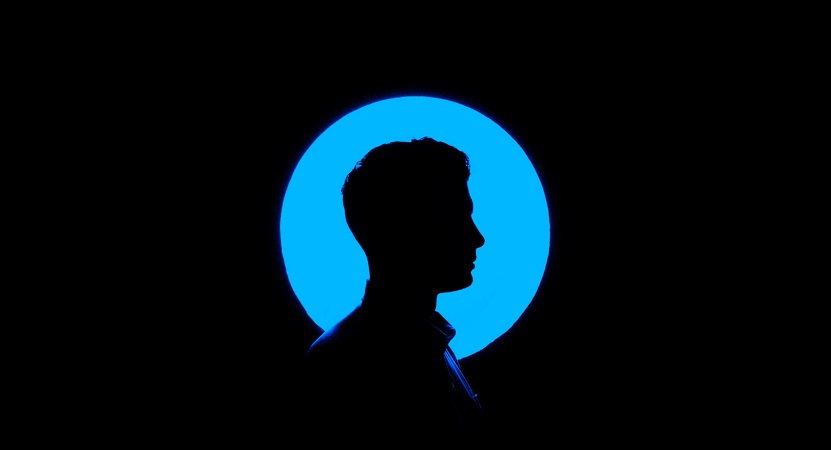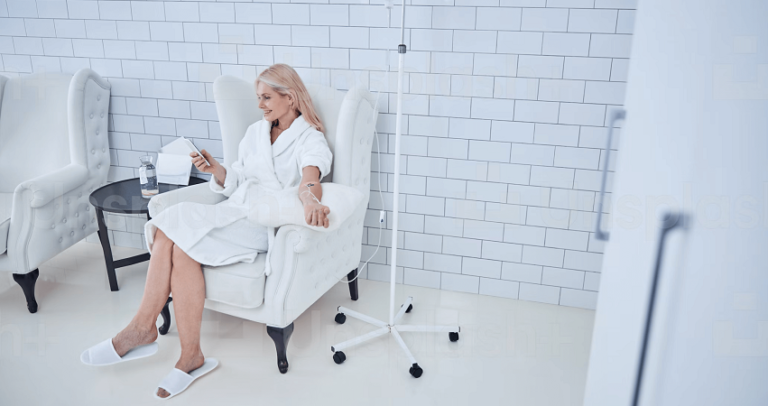Blue light and skin damage? Wait just a minute. While we’re sure you’re at capacity when it comes to things to protect your skin from, this is one subject that shouldn’t be overlooked. Stick around for a short yet informative breakdown of all things blue light skin damage.
In this article we discuss the following:
- What is Blue Light?
- How to Protect Skin from Blue Light
- How to Prevent Blue Light Skin Damage
- UV vs Blue Light
- PDT Red Light vs Blue Light
- Red Light vs Blue Light for Eyes
What is Blue Light?
While this may be a seemingly obvious answer, the official blue light definition is along the lines of a blue hued color that is within the visible light spectrum that can be seen by human eyes (yes, there are colors that we can’t see!).
Since blue light occurs over what is known as a “short wavelength”, it is said to produce far more intense waves of energy. Our skin, being the trusty receptor it is, interacts with these waves naturally, and unfortunately absorbs a lot of the light without much effort.
This is where the blue light skin good or bad debate comes into the picture. What is happening when this light is absorbed by human skin, and is it in our best interest?
What does Blue Light do?
The truth about blue light is that it can be harmful to the skin. Blue light radiation is another term for the phenomenon, and it’s essentially just the subtle seeping of these energetic waves into the skin over time.
Unfortunately for us, these waves are not the beneficial kind, like lasers and other energy based skin treatments. Blue light depletes the skin, and leads to numerous adverse physical reactions over time.
The trouble is, while blue light is bad for the skin, it’s great for the brain. Computer blue light is the form that most people come into contact with daily. This form of blue light, when received through the visual field, boosts the brain’s alertness, memory, and cognitive function. Exposing oneself to blue light during the day can really optimize one’s productivity.
That’s why most electronic devices switch to yellow light the second the sun goes down. The mind is nearly impossible to switch off when blue light is consistent, and since some people work into the evenings and/or watch series on their computers in bed, a break from the blue hues eventually becomes essential if reaching a sleep state is to ever occur.
How does Blue Light Affect You?
Other than keeping you awake, blue light has a unique interaction with your skin. For deeper insight, we spoke with research and writing expert Danielle Redcloud. “Blue light is known to penetrate the skin deeply, damaging essential proteins and resulting in wrinkles and loss of firmness. Blue light contributes to premature aging, pigmentation, eye damage, cataracts, cell shrinkage, wrinkles, and photo damage.”
Yikes. And these are just a few of blue light effects. So, is blue light harmful? Based on the aforementioned information, it’s seemingly not the healthiest companion for your anti-aging skin routine.
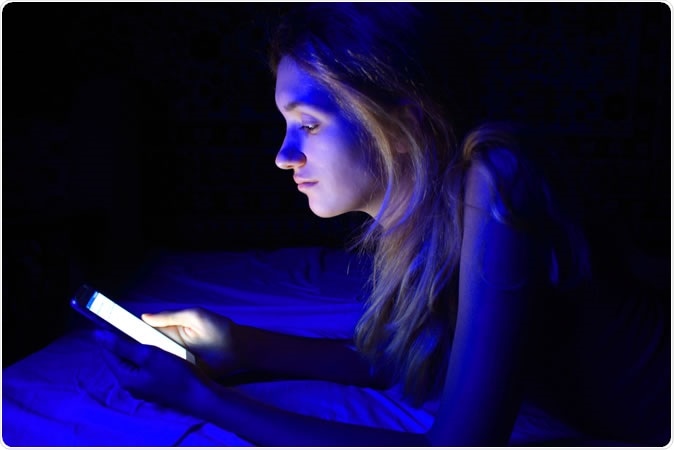
Perhaps the most alarming effect of this phenomenon is blue light hyperpigmentation. The fact that something seemingly invisible could be causing visible and permanent responses in the skin is a concern.
Does Blue Light Damage Skin?
Given numerous personal accounts and blue light damage skin studies around the world, one can deduce that this energetic ray does, in fact, have a negative, damaging effect on human skin.
Cindy Corpis, CEO of SearchPeopleFree, gave us a more in-depth analysis of what is really happening when these two natural elements interact. “The blue light coming out of the electronic devices leads to transformation in your skin cells, including cell death and shrinkage, which triggers the skin sagging process, even though short exposure of 60 minutes can speed up such changes,” explains Cindy.
Does Blue Light from Screens Damage Skin?
There are numerous sources of blue light in our immediate environments. The most common sources include electronic devices (does TV emit blue light? Yes!), the sun, LED and fluorescent lighting and, of course, screens (do laptops emit blue light? Also yes!).
Screen time is one of the leading causes of blue light damage to skin, purely because of the proximity at which we have become accustomed to using these devices.
“An excessive amount of blue light penetration to the skin accelerates pigmentation. The blue light from the gadgets is interlinked to the issues of eyestrain and skin cancer beget from damaging UVA and UVB. In order to prevent blue light skin damage, which could be wreaking havoc on your skin health, it would be better to protect against sun damage by wearing sunscreen, which will do the job effectively,” elaborates Cindy.
Laptops put us at high risk for blue light damage, but actually how much blue light do computer screens emit exactly? This kind of data can’t be quantified in such terms. Instead, blue light is quantified by how far it can travel. It is measured in wavelengths that are referred to as ‘nm’. Typically, blue light travels at a rate of somewhere between 380 to 500 nm.
Does Blue Light From Phone Damage Skin?
Laptops aren’t the only devices to blame for background blue light exposure. The blue light phones emit is just as damaging, albeit a little less harsh.
CEO at VIP to Go, Abe Breuer, gave us some insight into the existing research behind blue phone light and the skin. “Although there is still not enough data on the subject, the Journal of
Investigative Dermatology has concluded that it does damage the skin. Blue light has been shown to cause brown spots and hyperpigmentation in the skin known as the condition
melasma. Blue light can penetrate deep into the skin causing DNA damage and breakdown of collagen.”
Can Blue Light Cause Free Radicals?
The dangers of blue light don’t end at mild to moderate skin deterioration. Some more recent studies have managed to conclude that any form of visible blue light also induces free radicals in the skin.
For those who aren’t familiar with this term, free radicals are unstable atoms that damage human cells when they come into contact with one another. Free radicals are usually linked to aging, but they are also responsible for a myriad of illnesses and diseases.
Essentially, any contact with this kind of molecular species is something you want to avoid at all costs. However the fact that they are present within blue light makes it very difficult for humans to stay safe from such threats.
What does Blue Light Damage Feel Like?
Does the sun emit blue light? Yes. Will you feel the damage that the sun’s blue light causes? Probably not. One is more likely to feel the impact of the UV and gamma rays, as opposed to the milder blue waves.
That’s the trouble with blue light: Most people aren’t aware that any lasting damage is being done until the physical effects start to set in. There are warning signs, however, and training yourself to be sensitive to them could prevent a lot of damage in the long run.
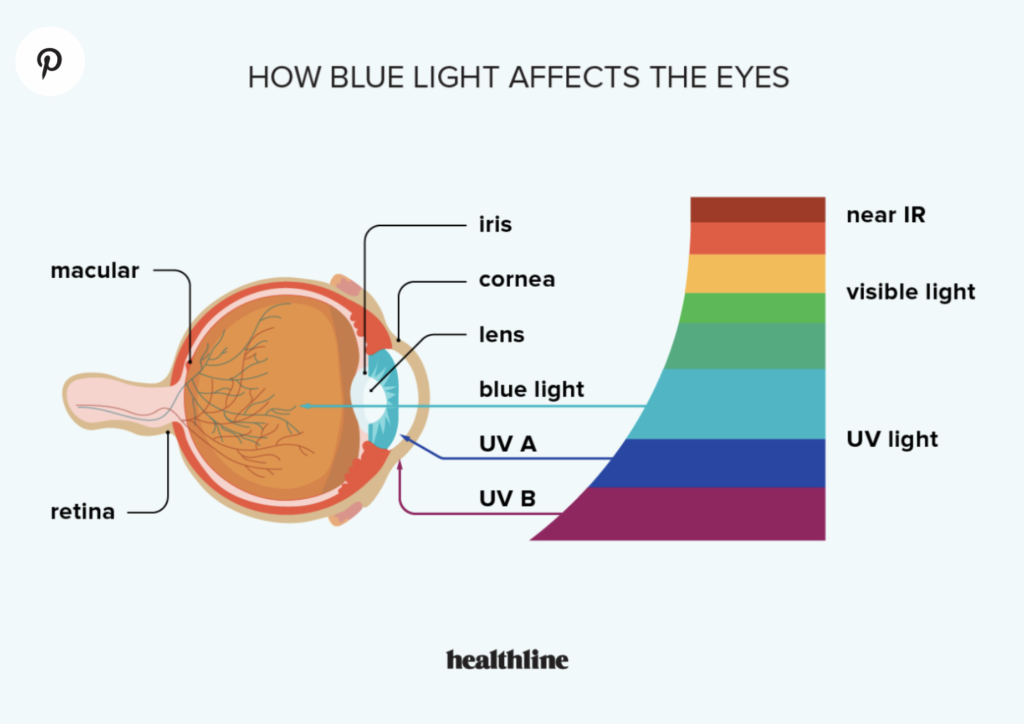
If you’ve been behind your computer screen for some time, and you start to feel your eyes getting fatigued and physically sore, this is a sure sign that the blue light from the screen is starting to take a toll on your body. At this point, take a break, or switch your screen to night shift for a while (even if you are using it during the day).
How to Protect Skin from Blue Light
Due to the vast amount of blue light that is naturally emitted from the sun, it’s very difficult to protect oneself from damage entirely. That said, we can minimize the extent of such damage by taking some preventative measures, such as targeted blue light treatments for skin damage.
We’ve got three words for you: sunscreen, sunscreen, sunscreen. We can’t emphasize enough how important this substance is for protection and prevention, especially with regards to blue light rays in the world around you.
Sunscreen is the key in blue light damage skin care routines, and without it you’re setting yourself up for failure — harsh, but true.
Does Sunscreen Protect from Blue Light?
Sunscreen is your best friend in the plight against blue light damage, but not all commercial sunblock is effective to the same degree. Mineral sunscreen is the strongest force against blue light, and most high-end skincare lines are waking up to the fact that they need to start offering blue light coverage in their ranges.
Read the descriptions of any sunscreens that you are considering using. In today’s market, it’s common for brands to disclose whether their product offers a full spectrum of protection including blue light.
Does Zinc Oxide Protect Against Blue Light?
Zinc oxide (also known as the chalky white sunblock that surfers and cricketers cake onto their cheeks) is the most potent form of protection against blue energy waves. A lot of sunblocks are made using this key ingredient already, but you’ll need to look out for it on the packaging to be sure!
Of course, one can purchase tubs of pure zinc oxide to use for blue light protection, but the appearance of this product on the face and neck isn’t very practical for someone who has to sit at an office desk, or run errands. Zinc oxide doesn’t dissolve into the skin; it remains very visible until it is washed off.
This is where the lines between protection and practicality start to become a little more rigid. Pure zinc oxide may be a relentless barrier against this invisible threat, but on a practical level it’s not really something everyone can wear daily.
Blue Light Blocking Moisturizer
Added to the list of what protects skin from blue light are any and all forms of blue light blocking moisturizers. These are up and coming additions to the skincare industry, and they’re making waves thanks to impressive results.
Moisturizing the face, neck and chest is something that we are advised to do at least twice a day. This is a fantastic routine to get into with a blue light blocking moisturizer as it means the first and second halves of your day are covered in terms of protection.
Your skin will be protected from the morning, and then again in the evening when you get ready for bed. This way, you can totally laze about binging Netflix until two in the morning, while simultaneously limiting the risk of damage to your skin. But remember, just because you can, doesn’t mean you should! We still recommend making a habit out of switching all devices to night mode as soon as the sun starts to set.
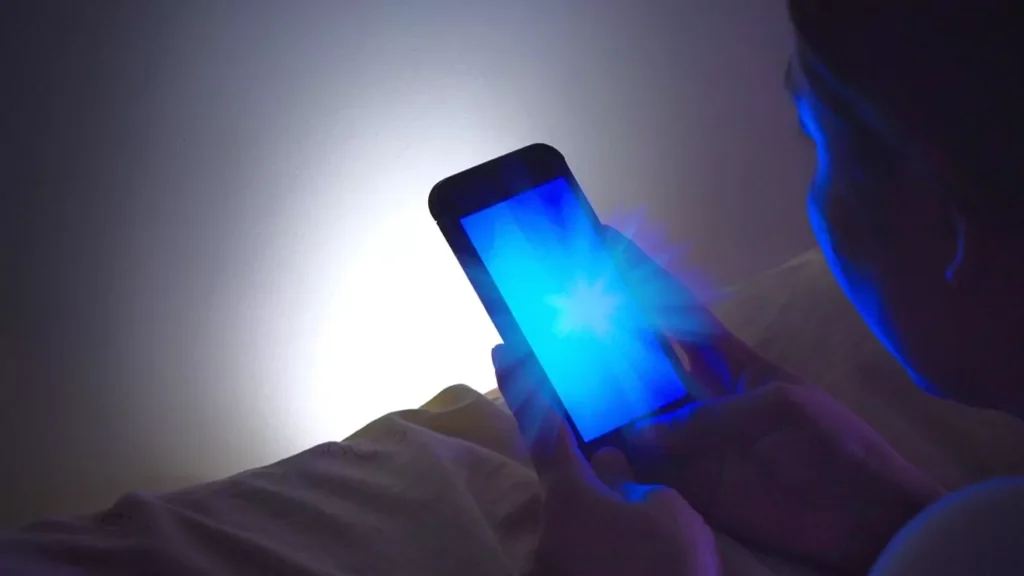
How to Prevent Blue Light Skin Damage
Stay indoors, in the dark, with no technology? Preventing blue light exposure entirely is simply not possible in this day and age. It’s an unfortunate reality that we simply need to adapt to, and we can make the most of the situation by simply taking preventative measures like the ones listed above.
Limiting your exposure to laptop blue light is also a good place to start. If you’re not able to cut down physical hours, then look at investing in a blue light barrier screen protector that can be applied over the laptop screen for an added layer of protection.
You’ll also want to start investing only in electronics that feature a ‘night mode’ of sorts. This means that come sunset, you can switch the device’s screen from blue to yellow light, creating a window for your skin to breathe free of these intense waves.
Prevention is always better than a cure, but we found it enlightening to know that even once the damage is done, all hope is not lost. There is now research being done to explore the apparent ability of iron oxide to reverse the negative effects of blue lights to a significant degree. We’d keep an eye out for more on this in the future!
UV vs Blue Light
UV, or ultraviolet light, is another type of energetic wave that humans absorb to an alarming degree. This light is a form of electromagnetic radiation. While this sounds more severe than blue light, it’s surprisingly a bit more gentle. UV light only travels at a length of 10 nm to 400 nm.
Abe Breuer, who we heard from earlier, had more to add on this subject. “Exposure to blue light is worse for the skin in comparison to similar levels of UVA rays. Furthermore, blue light has been shown to disturb melatonin production, increase stress, and disturb sleeping patterns. Other studies have linked blue light to swelling, inflammation, wrinkles, and skin laxity.”
Is UVB Blue Light?
The UV is a spectrum of light that can be broken up into 3 parts: UVA, UVB and UVC. A lot of people are under the misconception that the ‘B’ after UV stands for blue, and that this is merely another term for blue light.
This is false, and UVB light actually stands for ultraviolet b-light. It’s a different area of the light spectrum, to put it simply, and this type of light is actually incredibly vital to human design. UVB light allows for us to synthesize any intake of vitamin D3, which in turn leads to a more effective ability to absorb calcium in the body.
PDT Red Light vs Blue Light
PDT is a term you’ll find used with regards to both blue and red light, in different contexts. It stands for Photodynamic Therapy (PDT) and it’s a powerful form of light energy treatment that targets and kills cancerous and precancerous cells.
Due to its effectiveness, this therapy has been adapted to treat other more mild conditions, such as cystic acne and even anti-aging. PDT light emits LED’s, which can be manipulated to do different jobs on the skin. LED blue light eye damage is a common risk when working with these powerful lasers, which is why a skilled therapist is necessary in order to put the right protection devices in place for sensitive tissues like the eyes.
Red Light vs Blue Light for Eyes
Since we now know that different forms of light travel at different lengths, it becomes easier to understand how specific spectrums are being received by the human body. Blue light has short wavelengths and a lot of energy, while red light has less energy but longer wavelengths.
Which is better or worse for the human being? It depends on what one is doing, essentially. When watching a sunset, ideally it would contain more of the red spectrum than the blue, as this would be more gentle on the cornea to watch, and would result in little to no damage to the skin. However when working long hours on a laptop, red ray energy is simply not plausible, as it does nothing in terms of stimulating the brain for optimal productivity.
Similarly, if you’re settling down for bed and want to read a few pages of your book, a red night light would be preferable as it would start to bring your brainwaves down to a calm, non-stimulated state. A blue night light will simulate the sun or daylight, keeping you awake and energized even if this is not your desire.
Did You Enjoy This Article?
If you enjoyed this article, you might also like our articles discussing skincare such as Zinc for Acne, Fasting Tea and Best at Home Chemical Peels.

